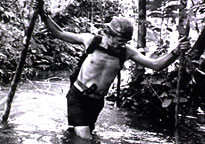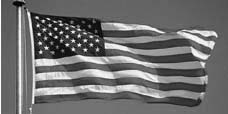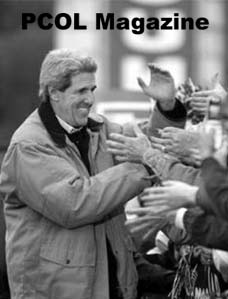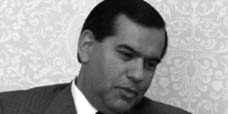
Interview with Kenya RPCV Mike Fay
EXPLORATIONS Ė Exploring Africa
By Jerilyn Watson
Email this article to a friend Printer Friendly Version
Broadcast: November 17, 2004
(MUSIC)
VOICE ONE:
Iím Faith Lapidus.
VOICE TWO:
And Iím Steve Ember with EXPLORATIONS in VOA Special English. Today we visit Africa with a well known biologist and explorer.
(MUSIC)
<b>J. Michael Fay, Explorer.</b><br>(Picture - PBS)
J. Michael Fay, Explorer.
(Picture - PBS)
VOICE ONE:
On World Environment Day last June, explorer J. Michael Fay began exploring Africa from the air. Mister Fay is flying over one hundred sixty thousand kilometers of the continentís wildest forests and most densely populated areas. He and his pilot, Peter Ragg of Austria, are making photographic records of fifty of the fifty-four countries of Africa.
The two also are meeting with African environmental activists and government officials. Mister Fay wants to find places that could be officially declared areas of conservation where wildlife can be protected. And he also wants a closer look at the populated areas.
VOICE TWO:
Many people believe that Africa has endless undeveloped land. Michael Fay does not think so. He says humans are changing some of the worldís last totally wild areas. And he believes it is important to save parts of Africa in their natural form.
Michael Fay was born and educated in the United States. He earned a doctorate degree in anthropology from Washington University in Saint Louis, Missouri. He went to Africa as an unpaid worker with the Peace Corps in nineteen seventy-eight. That is when he discovered the place that would guide his lifeís work.
For more than twenty years, he has lived in central Africa. The continent is now his home. It is also the heart of his work. Mister Fay is an expert about plants and animals. He is also an expert photographer. In his forty-five years, he has explored thousands of kilometers of land. Michael Fay has survived many dangers. One very bad day, he was attacked and injured by an angry elephant.
VOICE ONE:
Mister Fay is now flying over Africa in a forty-year-old, single-engine airplane. The pilot, Peter Ragg, owns the plane. He painted it bright red. The National Geographic Society and the Wildlife Conservation Society are paying for the trip. Both groups have headquarters in the United States. The trip is called the Africa MegaFlyover. It is expected to end next August. It is the most far-reaching study by air of the people, animals and plants of Africa.
VOICE TWO:
Michael Fayís flying conservation project began June fifth with great ceremony at the Swartkop Air Force Base in South Africa. One hundred eighty-two people celebrated the launch of the MegaFlyover. The United States ambassador to South Africa, Cameron Hume, was among the guests. So was Virginia Rathebe (Rah TEH bay), a traditional tribal healer. She offered good wishes for the exploration.
Other aircraft also lifted off with Mister Fayís plane. They included members of the Bataleurs, a team of South African pilots. This group is named for a bird. Its members fly over Africa for environmental causes. The Bateleurs are supporting Mister Fayís project in a number of ways.
A South African Air Force helicopter also started with the MegaFlyover team. The helicopter carried twelve photographers. They recorded the beginning of the air travels of Michael Fay and Peter Ragg.
(MUSIC)
VOICE ONE:
J. Michael Fay has made many extended and difficult trips. In nineteen ninety-nine and two thousand, for example, he walked three thousand two-hundred kilometers across Africa. This project was called the Megatransect. His goal was to record every kind of plant and animal he found on his walk. A team of Africans walked with him. At times, National Geographic magazine photographer Michael Nichols joined the group.
Their explorations took them through the Central African Republic, Congo and Cameroon. The walk took fifteen months and ended in Gabon. Mister Fay chose areas to explore where few or no people lived. He called these places the Last of the Wild, or the Wildest of the Wild.
VOICE TWO:
Mister Fayís travels showed the world that Gabon had areas that needed to be protected. After his visit, Gabonís President Omar Bongo officially opened thirteen national parks in the nation. Mister Fayís Megatransect walk raised more than one hundred million dollars. The money is aiding six central African nations to protect their wild areas.
He said the results of his walking travels caused him to start his current flying trip. He said he wanted to do for all of Africa what he had done for Gabon.
VOICE ONE:
As you might think, Mister Fayís Megatransect walk was not easy. His team had to cross rivers and jungles. They had to deal with wild animals, snakes and insects. Gorillas and elephants visited the explorers. They watched the group before retreating back into the thick green jungle. Some of the members of the team suffered diseases including malaria, hepatitis and pneumonia.
VOICE TWO:
An unusual map helped make possible both Mister Fayís walking trip and his current air travels. He was able to use such a map because the world changed dramatically during the nineteen nineties. Many years of tensions ended between western nations and the former Soviet Union.After that, the American government released some satellite images. Civilians now can map the whole world much better than before.
VOICE ONE:
The new information helped scientists in New York City make an extremely useful map. Workers at the Wildlife Conservation Society and New York University created this Human Footprint Map. The map got its name because it recognizes areas of human activity.
It also shows land cover, roads, rivers and coastlines. It shows different areas like deserts and wet lands. It shows electrical power use at night. From this information, it has become clear that people have used and changed most of the livable surface of the planet.
(MUSIC)
VOICE TWO:
Michael Fay and Peter Ragg are following the Human Footprint Map from their plane. They also are adding to it. They are taking photographs with a digital camera every sixteen seconds. The images show uses of land and kinds of soil. When these images are combined, they should make a complete picture of the Wildest of the Wild.
Mister Fay hopes to propose detailed conservation projects in Africa from the observations. He will present these plans to the United States and other governments and organizations. His goal, as always, is to help save the wild areas for the future of humanity.
VOICE ONE:
Mister Fayís observations about Africa do not stop with conservation efforts. He observes crowded areas near national borders. Then he notes nearby unpopulated land.
The explorer says people without land traditionally move into empty land. For example, he says central Africans are moving west even though they may cross political borders. He believes that border crossings are causing conflicts in the Congo, Rwanda, Uganda and Sudan.
Mister Fay says observations made possible by the Human Footprint Map have created a whole new science. He says this science can tell what group will attack another --- and when this could happen.
The results of people moving to get natural resources may be political, Mister Fay reasons. But he says the conflict is really not about politics. Instead, he says it involves use or misuse of the resources. For example, he charges that most of the wood cut in central Africa is burned or wasted.
(MUSIC)
VOICE TWO:
Some of the most dramatic problems of Michael Fayís MegaFlyover took place during its early months. That is when the little red plane passed over wildlife protection areas, national animal parks and totally unpopulated areas in South Africa. By the time the team left South Africa for Namibia, it had equaled the distance between Paris, France and Bangkok, Thailand.
Their plane has given the explorers some bad moments. For example, on an extremely windy day, the pilot was trying to land the plane. Mister Fay reported to the Bateleurs that the speed of the plane jumped from fifty to one hundred fifty knots. Then it slowed again. He compared the flight to a rollercoaster ride at an amusement park.
VOICE ONE:
But the plane landed safely. If they continue to have good luck, the flying environmental explorers will finish their work in about nine months. By that time, Michael Fay should have a very good idea of where to protect African land that is the Wildest of the Wild.
(MUSIC)
VOICE TWO:
This program was written by Jerilyn Watson and produced by Mario Ritter. Iím Steve Ember.
VOICE ONE:
And Iím Faith Lapidus. Join us again next week for another EXPLORATIONS in VOA Special English.






